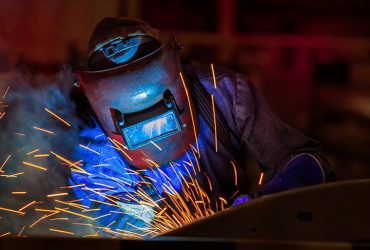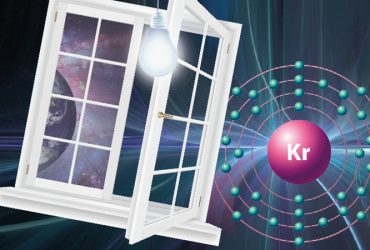
Argon fixes your eyesight and launches satellites into to orbit
The most common noble gas in the earth’s atmosphere is argon. The gas is obtained from oxygen produced in air separation plants. It´s widely used in many applications, used alone or in special gas mixtures.
Argon (Ar) is a colourless, odourless, tasteless and non-toxic gas. It was the first noble gas discovered. Like all noble gases, argon has eight electrons in its outer shell. It’s something that atoms otherwise usually strive to get by reacting with other atoms and sharing electrodes. That’s what makes argon so stable. Argon is formed, inter alia, when unstable radioactive potassium falls apart. It can therefore be used to determine the age of minerals and rocks, through so-called potassium argonization.
Effective shielding gas used in welding and cutting
Applications for argon often utilize its inert properties for protection against the oxidizing effect of air. Argon has a much higher density than air, which makes it an effective shielding gas, often used when nitrogen is too reactive and other noble gases too expensive. Its commonly used in welding, either as pure gas or in a gas mixture, to protect the hot molten metal from contamination by other atmospheric gases such as oxygen, nitrogen and water vapor. Because of the high quality of argon-welded seams, the gas is used to manufacture power generation equipment and fuel tanks for Ariane rockets.

Ariane launch rockets are used to get satellites into orbit. The fule tanks for Ariane rockets have high-quality argon-welded seams.
In cutting, pure argon is used at a very high temperature for plasma arc cutting of ferrous and non-ferrous alloys. It improves ionization in arc plasma welding, which is a commonly used method in car and wind turbin production. It´s used as a protective atmosphere for reactive metals in heat treatment, to avoid nitrogen reaction or where nitrogen needs to be excluded completely. Serving as a protective atmosphere, argon is common in semiconduction applications e.g for silicon crystal pulling in wafer manufacture. The gas plays an important role as shielding gas in incandescent ligthts, and is an important part of the fluorescent light – giving it a blue shine – and in low energy lamps.
Argon improves steel quality and keeps the food fresh
Argon is also used in metal refining, for materials such as high-grade steel, aluminium or titanium. It´s there used for degassing and stirring to prevent oxidation, ensure evenly heated melts and exact composition specification as well as reduce chrome loss in high-grade steel manufacturing. Another area of use is inerting and purging of storage vessels and pipelines in chemicals and pharmaceutical plants. In addition, argon is often used in food industries, especially as packaging gas. Because heavy argon penetrates oxygen and humid air in the packaging, the food stays fresh longer. Its used for the same reason when storing wine in barrels.

Argon has a very low thermal conductivity relative to most other gases. This makes it a useful gas for insulation, e.g. to fill inter-space in double glazed windows.
In the field of medical care, liquid argon is used to destroy cancer cells. It also plays an important role in excimer lasers, a technology that has revolutionised eye surgery. It´s a quick and highly effective method of treating distorted vision or far and near-sightedness. An ultraviolet light beam is used to destroy unwanted tissue. A mixture of noble gases is used as the laser medium, and the purity of these gases is critical for the laser performance. Typically, the laser gas consists of 0.05-0.3 percent reactive gas halogen (fluorine or hydrogen chloride), 1-10 percent noble gas (argon, krypton or xenon) and 90-99 percent buffer gas (helium or neon). Excimer lasers are also used in the electronics industry, in microlithography processes for electronic circuits, to manufacture mobile phone displays and drill microscopic holes in the nozzles of inkjet printers.
Did you know this about argon?
- Argon is the third most common gas in the air we breathe every day. It´s also found in abundant amounts on other planets. Merkurius atmosphere consists of 70 percent of argon, which is comparable to the 0.93 percent of the earth.
- The name argon comes from the Greek word “argos” which means sluggish or lazy.
- Already at the end of the 1700s, there were researchers who suspected that what later became known as argon was found as a constituent in ordinary air, but it was not until 100 years later that one actually managed to prove it in two different ways. Firstly, it was discovered when it was noticed that nitrogen produced by chemical compounds was lighter than nitrogen from the atmosphere. Secondly, new lines in the air’s color spectra were discovered. Both phenomenon are caused by the fact that argon is heavier than other gases in the air.
Text: Cecilia Rudengren
Photo: Shutterstock


